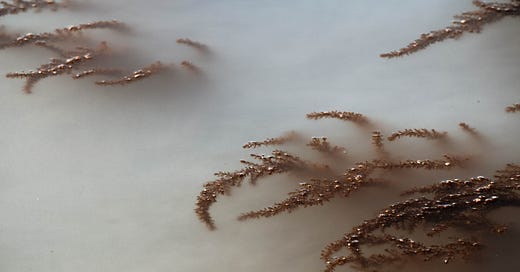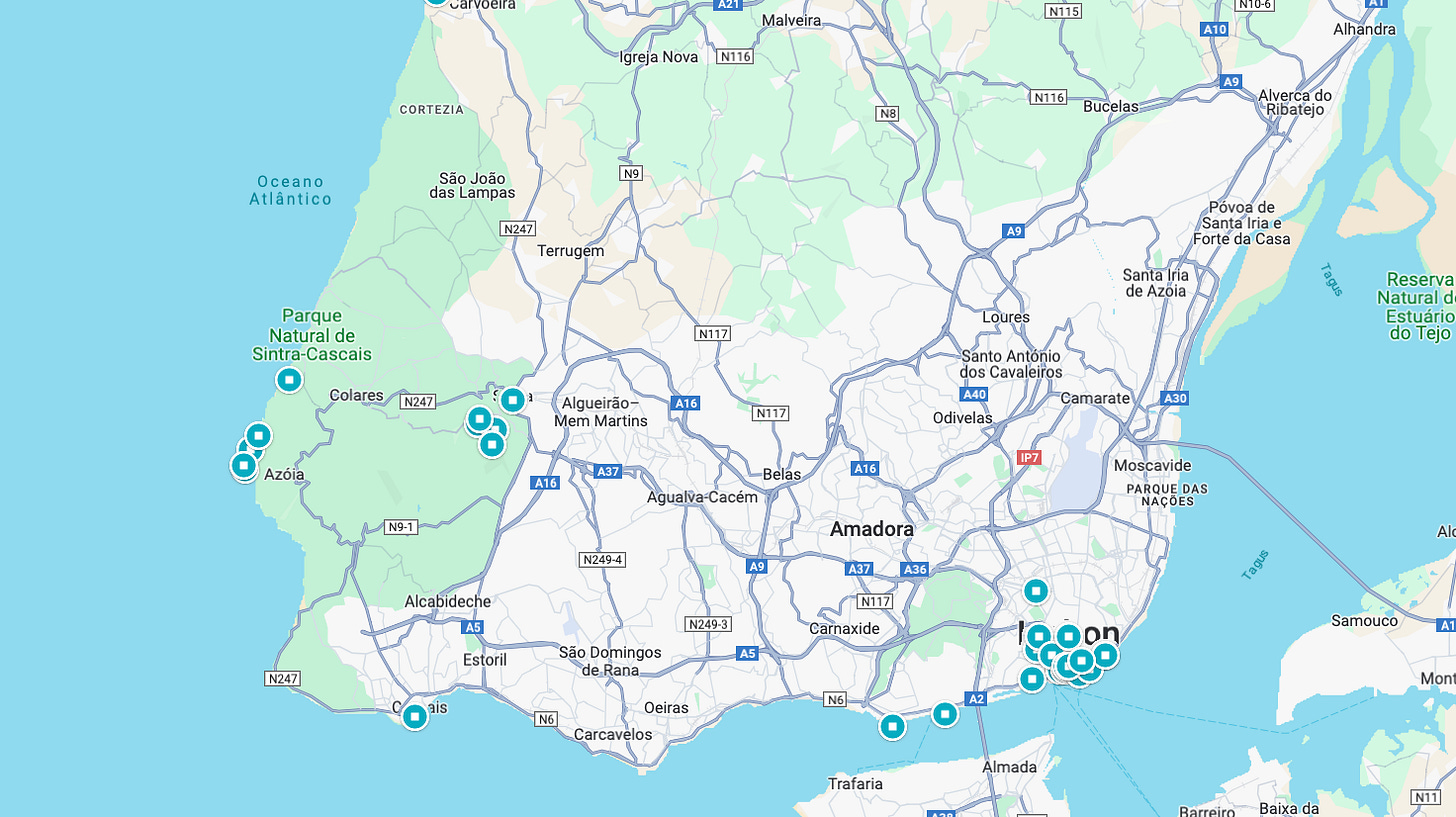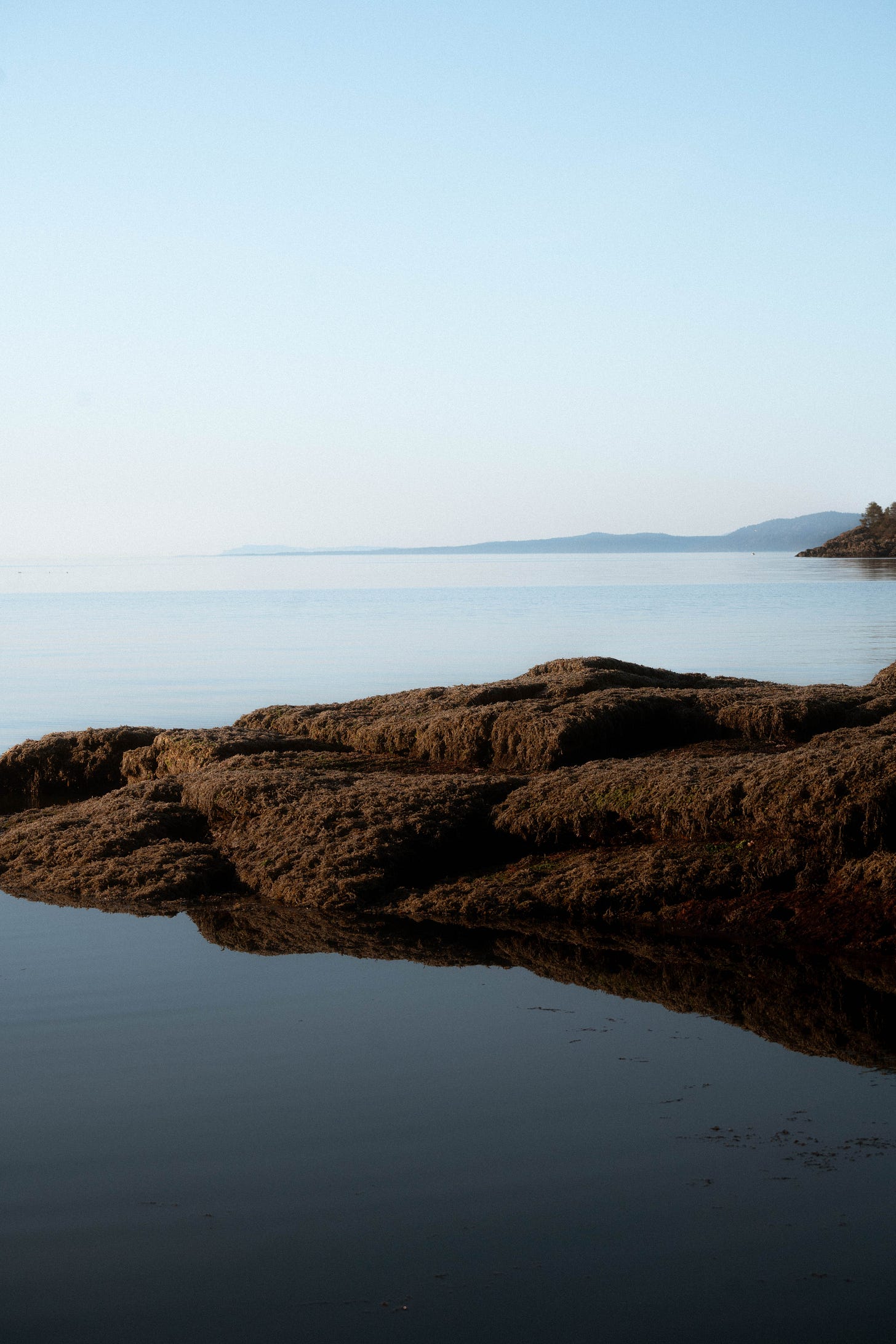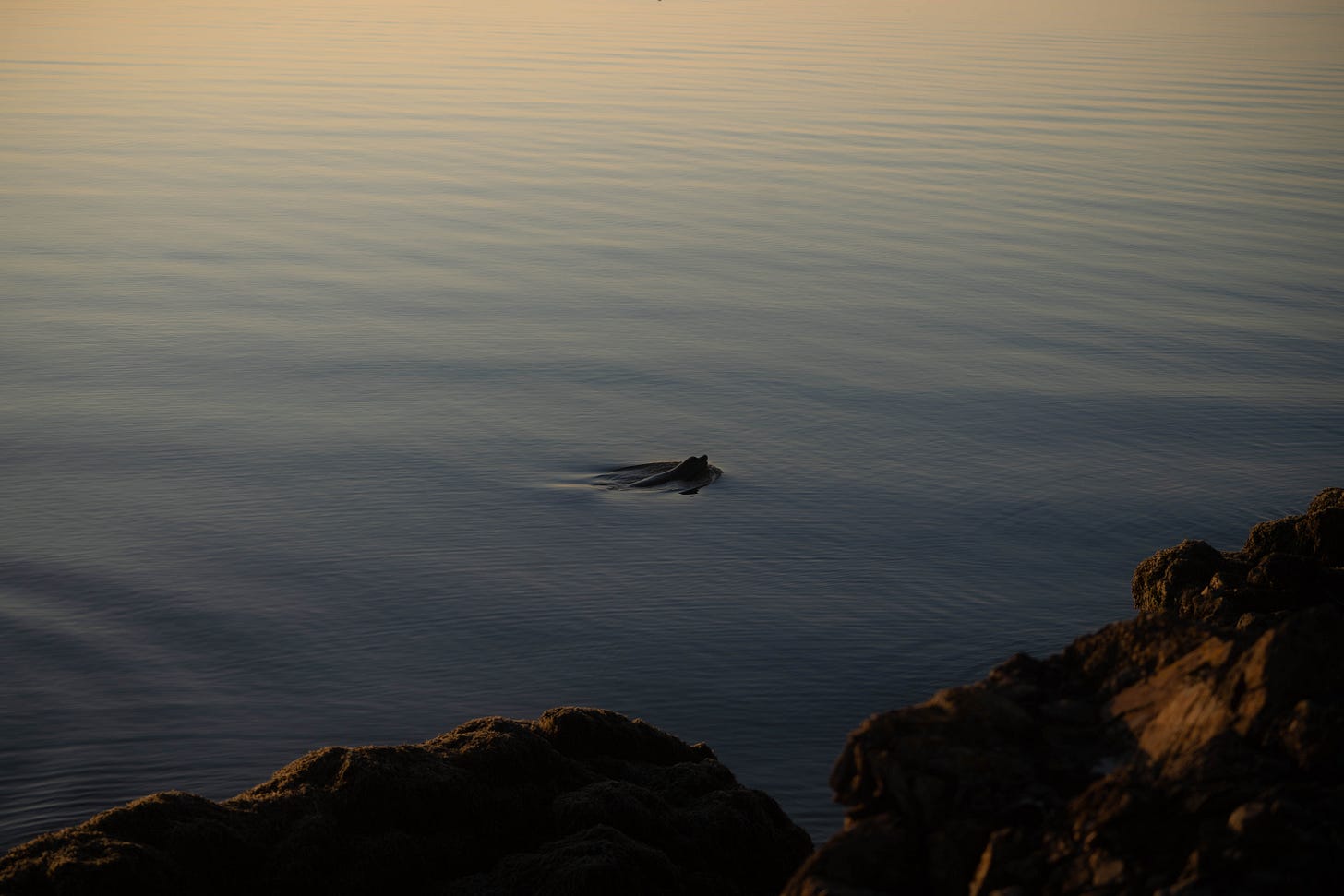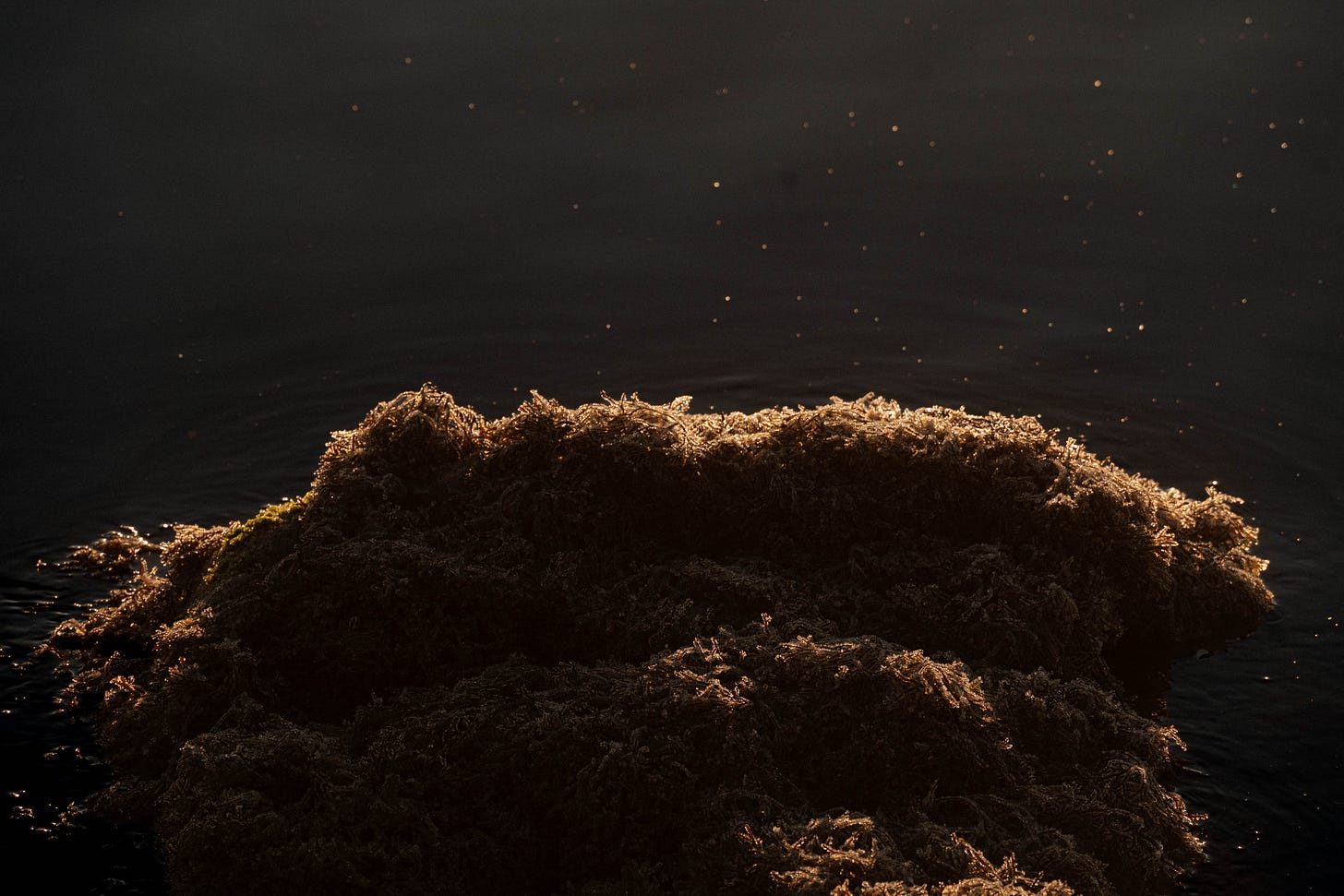I'll admit, this week has been challenging. I squeezed in extra work ahead of a vacation. Ironically, being a freelancer doesn't mean taking time off, it just involves shifting the workload and doing more at another time. Most of my work these days is retainer work, so blocking time off is a puzzle I am still working on. This has resulted in poor sleep, inconsistency in my movement practice, and overall, I feel like a weary, hunched-over human glued to my keyboard.
A while back, I wrote a blog about the restorative power of nature. I thought it would be useful to revisit one of the concepts from that blog as a reminder to nurture my brain: the Attention Restoration Theory (ART). And let's pause for a chuckle at the serendipity here—ART, advocating for the creative souls? It's almost as if the universe scripted this acronym with a wink and a nod towards us creative types. Indeed, ART proves to be a masterpiece for the creatively inclined.
Now, before I explain the what, and how, I want to breeze over the why.
Day in, day out, our brains shuffle through a deck of decisions, from the mundane ('What's for dinner?') to the mind-bending ('How do I solve this work puzzle?'). It's a mental marathon with no finish line in sight. Our brains are constantly processing information and prioritizing what's important. Your ability to focus will decrease over time, and you will experience mental fatigue.
The thing with mental fatigue is, it isn’t only going to impact one thing. It seeps into all areas or life, six to be specific: how we take in information, think, act, make decisions, feel, and interact with others.
Mental fatigue makes it difficult to focus on goals. However, our attention towards things in our environment isn't as affected. This makes us more prone to distractions and less able to adapt, making the things that do grab our attention seem even more distracting. Over time, our actions become more and more influenced by what's happening around us. Mental fatigue can also lead to feeling disconnected or unmotivated because we can't focus as well as we need to.
In simpler terms, when you're tired, you're less likely to be creative, complete your project, or feel inspired to pursue a goal.
You are more likely to be distracted by your phone, aimlessly visit the refrigerator, and emerge an hour later with nothing substantial to account for the lost time. Or maybe that is me.
I do have some good news though, that is not some productivity hack or “sleep more” basics.
I am here to convince you to go look at some clouds, take a walk, and get distracted by nature.
It turns out that paying attention to beautiful but less important things, like natural scenery, can help fight mental fatigue. The theory of attention restoration (ART) suggests that looking at nature—like beaches, forests, or mountains—lets our minds wander freely and relax from the intense focus required in daily life. This kind of mind-wandering helps refresh our ability to concentrate when we need to.
The theory was developed by Stephen and Rachel Kaplan in the 1990s, and proposes a journey toward cognitive restoration that unfolds in distinct stages.
The Basics of ART
ART explains that nature can help us feel refreshed when we're mentally tired. This is because our brains can get worn out from focusing too much, especially today when we have so much information to process. However, some types of focus can actually make us feel energized.
Types of Attention
Involuntary Attention: This is when something grabs our attention effortlessly. Nature is full of these captivating elements, like a beautiful sunset or an interesting bird call. Engaging with these doesn't tire us out; it's actually enjoyable and refreshing.
Directed Attention: This refers to the focus we apply when concentrating on tasks, particularly those that are boring or demanding. It demands effort and can result in mental fatigue. This can also occur after an extensive period of creative work or practice that required your undivided attention. This explains why you can maintain focus for a certain period, but not indefinitely, and why you may feel the need to take a break to progress.
Restoration: Shifting Your Attention
Restoration is about recovering from the fatigue caused by too much directed attention. ART says that to refresh our minds, we need to shift from directed to involuntary attention. Nature, with its inherently fascinating elements, is the perfect place to do this because it naturally captures our interest without effort on our part.
The Restorative Environment
For an environment to truly help us recover, it needs to have four key qualities:
Being Away: Being physically and mentally removed from our daily stressors.
Extent: Offering a rich experience that feels like entering a different world.
Fascination: Providing interesting and engaging elements that capture our involuntary attention.
Compatibility: Fitting with what we want to do, making it easy for us to engage with the environment in a way that feels natural and enjoyable.
Restorative Experience
An environment that combines being away, extent, fascination, and compatibility allows us to engage our involuntary attention. This, in turn, helps us recover from mental fatigue, making us ready to be creative, take on tasks, and focus on goals.
Research supports the idea that nature and restorative environments can help reduce mental fatigue. This is shown through both psychological and physiological measures, such as improved mood and reduced stress indicators.
There is a study showing participants who spent three days in the wilderness performed 50 percent better on creative problem-solving. Not everyone can get away for three days when they want to feel creative though.
The core idea of ART is that spending time in nature can help us recover from the mental fatigue of modern life. Nature provides a unique setting that engages our minds in a gentle, enjoyable way, allowing us to refresh and restore our capacity for focused attention. You don’t need to spend three days in the wild, but finding an immersive experience will help.
Spending time outside isn't just about physical activity; it's also about healing our minds and spirits.
[If you would like to have further reading, I have my sources at the end.]
What I Was Watching
Title: Once Upon a Forest
Created by: Campfire Stories
Synopsis: Maria was a romantic, animal-loving, dreamy child who, growing up, had a hard time conforming to the demands associated with the trajectory towards "a normal life". As a young adult she became depressed, and was encouraged by her therapist to go for walks in the forest. The myriad of funny-looking twigs and sticks she found along the way immediately put her on a path to recovery. Now, 25 years later, she's a celebrated "twig poet" whose art is shown in galleries throughout Sweden. When a climate related crisis strikes the forest where she lives and works, she's forced into a new type of creativity in order to save the place that once upon a time saved her.
What I was reading:
I am being a bit generous with the definition of 'reading' this week, as I am planning a trip. Whenever possible, I have been making plans and building out a Google map for my trip to visit my brother in Portugal. I know it will be a mix of family time and adventures, so I need to at minimum have things placed on a map. To ensure I get a mix of the 'must visits' and 'hidden gems', I made sure to take a peek at Atlas Obscura and carefully scannimg google maps for interesting spots. The beach I am most excited about is Ursa Breach, food wise I need to pop by for pasteis de nata from Vegan Nata , and of course I can’t forget a book shop, which I have several but clealy Bertrand is a must.
If you have any suggestions for Lisbon, or east of the city, let me know! I will be spending most of my time in the town of Ericeira and plan on driving south to some amazing beaches, Sintra, Lisbon, and generally anywhere within an hour or two.
Personal Work
Herring season has arrived! Below are select photos from a visit to Nanoose Bay for sunset.
I wrote about the herring spawn here if you’d like to learn more about it. And, if you are wondering… that ‘texture’ on the rock are millions of herring eggs attached to seaweed.
Hey, you made it to the end! I have a complete "I can't believe I did that... maybe I am cursed" secret.
I rarely get to fly my drone because I live in an area that does not allow it. Last year, I had to drive an hour away to be able to use it to see the herring spawn. I crashed it. I don't even want to go into it. I was lucky it landed in someone's yard and I was able to replace it.
This year.
We once again drove an hour away. Before we left, I packed my bag, charged my batteries, and checked that I had everything.
You know what I didn't check?
The micro mini card for my drone. I wanted to crawl into a hole and wither away.
I still tossed it up, so I could see the spawn. But this is the second year of messing this up. I hope to get out this Sunday for redemption and hope that the third time is the charm. And yes, I know I have some low res back ups, but hey, it isn’t the same.
Here is a short unedited low resolution clip of a seal diving for herring:
Further Reading, Sources for ART:
Hammitt, W. E., Backlund, E. A., & Bixler, R. D. (2005). Place bonding for recreation places: Conceptual and empirical development. USDA Forest Service, Northeastern Research Station. Retrieved from https://www.fs.usda.gov/ne/newtown_square/publications/technical_reports/pdfs/2005/326papers/hammitt326.pdf
Wikipedia contributors. (n.d.). Attention restoration theory. In Wikipedia, The Free Encyclopedia. Retrieved from https://en.wikipedia.org/wiki/Attention_restoration_theory#:~:text=Attention restoration theory describes various,Effortless attention
Kaplan, S., & Kaplan, R. (1989). The experience of nature: A psychological perspective. Cambridge University Press. Retrieved from https://archive.org/details/experienceofnatu00kapl/page/146/mode/2up
Hartig, T., Mitchell, R., de Vries, S., & Frumkin, H. (2016). Nature and health. Annual Review of Public Health, 37, 207-228. https://doi.org/10.1080/10937404.2016.1196155


